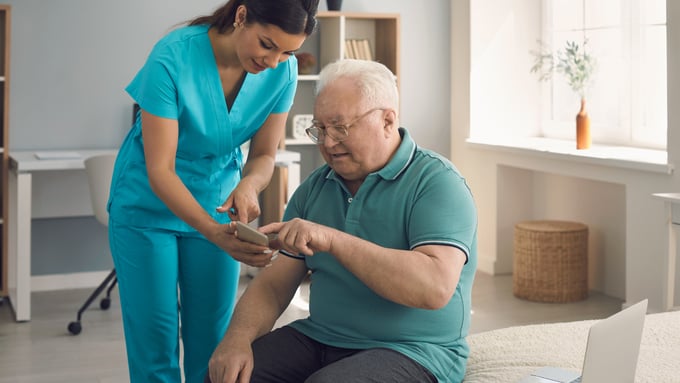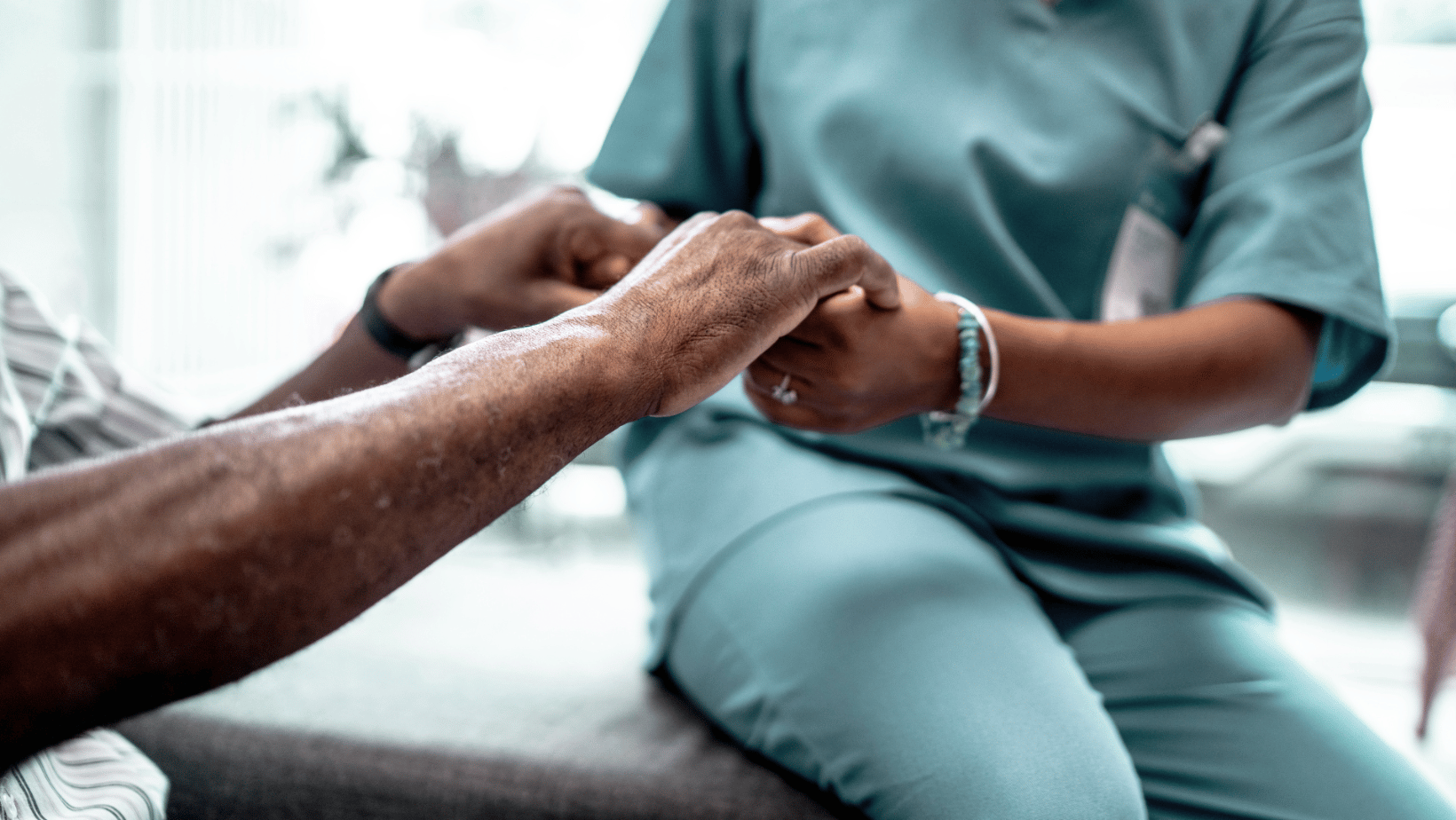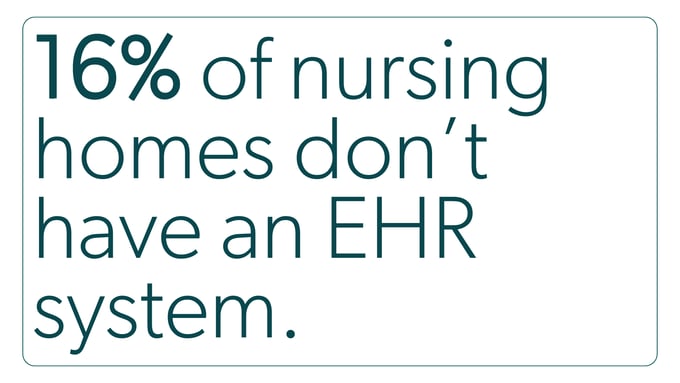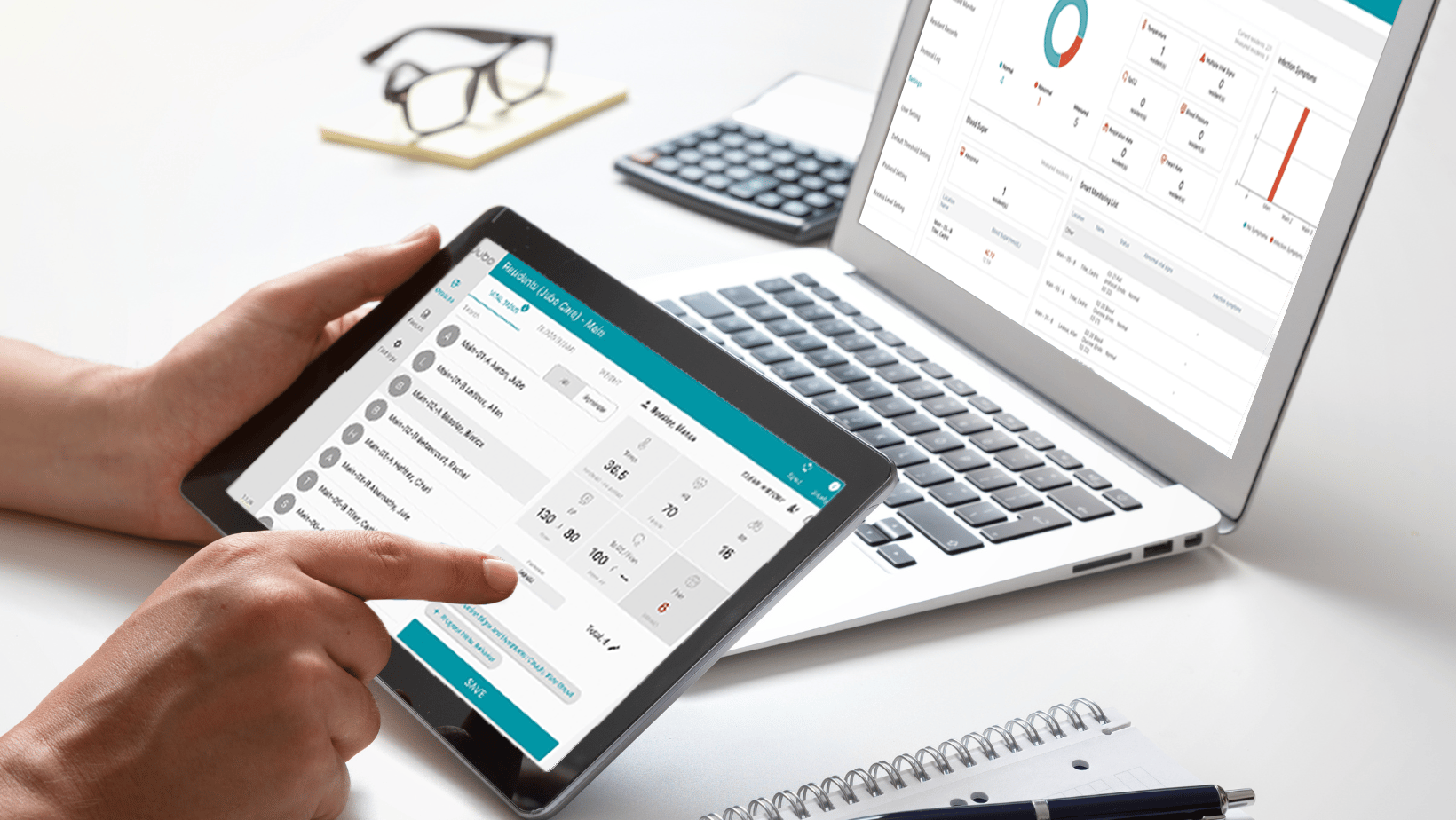Tens of millions of seniors depend on senior care services to safeguard their health and enhance their quality of life. Skilled nursing facilities (SNFs) like yours are tasked with providing that care — ideally to a high standard. Unfortunately, this has proven to be a formidable task for North American senior care facilities. According to a National Academies of Sciences, Engineering, and Medicine report, American nursing homes are plagued with low staffing, lack of compliance, and substandard infection control. Canadian nursing homes also grapple with staffing shortages, non-compliance and violations, and unfavourable resident health outcomes. And things were much worse during the COVID-19 pandemic.
Whether you're a senior care facility manager or administrator, chances are you're fully aware of how difficult it can be to provide residents with high-quality nursing-level care. There's a lot on your plate, from resident health, safety, and security to finance management and regulatory compliance. How could you possibly manage it all?
Effective vital sign monitoring could be the change your facility needs to turn things around. In this article, we'll explain the link between vital sign monitoring and senior care service quality, the importance of quality care in senior facilities, vital sign monitoring benefits, and more. By the end, you'll have actionable guidance you can use for quality improvement within your community.
 The State of Nursing Homes in North America
The State of Nursing Homes in North America
In a perfect world, every nursing home or senior care facility would provide high-quality care to residents. But we're in the real world, and that's not realistic. In fact, in a Gallup poll conducted in America, most U.S. adults graded U.S. nursing homes a D+ on overall quality. Here's a breakdown of the rating scale and how the ratings panned out:
- A - Excellent - 1%
- B - Good - 8%
- C - Satisfactory - 33%
- D - Poor - 36%
- F - Fail - 6%
- No opinion - 14%
Some of the main concerns survey-takers mentioned were low-quality care, mental and emotional issues associated with nursing homes, and high costs.
According to a study published in the National Academy of Sciences, the way in which the United States finances, delivers, and regulates care in nursing home settings is "ineffective, inefficient, fragmented, and unsustainable." Canadian senior care communities are also struggling to provide quality care, hence the Fixing Long-Term Care Act.
What Does High-Quality Care in Nursing Homes Look Like?
Since you're here, it's safe to assume you want to know how to improve your skilled nursing facility. But how can you make positive change without knowing what you're striving for? Here are a few of the main indicators of high-quality skilled nursing facilities:
- Person-centered care for every resident. In a high-quality SNF, each resident has an individualized care plan designed to address their unique health needs and push them toward their goals.
- Staff that are knowledgeable, experienced, and adequately trained. The best facilities have stellar staff members who run the place like a well-oiled machine. All professionals and paraprofessionals have a part to play in the well-being of the residents. They should be able to provide quick, appropriate interventions.
- Safe environment. Quality care is provided in an environment that is safe for residents. Being that nursing homes are hotspots for infection and illnesses, cleanliness must be taken very seriously. Staff should regularly disinfect surfaces throughout the facility and follow their community's protocols to the letter.
- Free communication and collaboration among staff. The most successful skilled nursing facilities foster a culture of open communication within the facility. That way, decisions are made with all the necessary health information from relevant professionals.
- Provision of other activities and stimulation for residents. In the interest of caring for each resident as a whole, high quality SNFs provide more than health-related care for residents. Regular interaction, programs, and activities help to add interest to what could be a very lonely life for some seniors.
There is no single perfect community out there. But these are some of the qualities that the best facilities possess.
In addition to the above, setting measurable goals and tracking quality measures over time helps you determine how your facility is doing. Here are some metrics to track:
- The percentage of residents who are underweight or losing too much weight.
- How many residents have pressure ulcers.
- How many residents have spent most of the last week in a stationary position.
- The percentage of residents who exhibit a depressed mood.
- How satisfied residents are with how fast staff come to their aid.

What is Vital Sign Monitoring for Senior Care Administrators?
While measuring residents' vital signs is an important part of vital sign monitoring, in the case of senior care administrators, the term incorporates much more than that. Here are some of the other functions associated with vital sign monitoring:
- Formulating policies surrounding vital sign monitoring and management.
- Training nursing staff and caregivers on how to handle vital sign data.
- Gathering the right equipment and tools for accurate, timely vital sign measurements.
- Maintaining compliance and quality assurance through regular audits and retraining initiatives.
- Reviewing and analyzing data for insights that could improve facility operations.
- Collaboration across medical teams for the benefit of each resident.
Note: This is not an exhaustive list of vital sign monitoring elements.
These functions play a monumental role in the operational efficiency of any skilled nursing facility.
The Link Between Vital Sign Monitoring and Senior Care Service Quality
Vital sign monitoring and senior care service quality go hand in hand. The former significantly affects the latter and can make or break your facility.
When a facility is on top of vital sign management, they can immediately discover when a resident needs immediate assistance or a treatment plan change. With vitals information at your team's disposal, they can provide proactive, targeted care that directly addresses your residents' needs.
When vital sign monitoring is lacking, your facility's ability to provide quality care diminishes. And the reverse applies – facility operations suffer when vital sign management isn't prioritized. Time and time again, we've seen ineffective, haphazard vital sign monitoring result in severe health consequences.
And this isn't the full extent of it — vital sign monitoring that incorporates data analysis further increases vitals measurement accuracy. It also enables management to pinpoint quality issues like measurement errors and documentation mistakes.
 The Importance of Quality Care in Senior Facilities
The Importance of Quality Care in Senior Facilities
Quality care is of the utmost importance in senior care facilities. As you might expect, quality care is necessary due to its direct effect on the health of the residents under the facility's care.
And it's bigger than just your facility. With millions of seniors in need of ongoing nursing-level care, and the projected increase of aging people in the population, senior care services are sorely needed. Without facilities providing targeted care to this population, there'd be a sizable hole in the healthcare system and many people living without the care they need.
A great way of gauging the importance of something is to consider its advantages. Here are the advantages of high-quality care provided in the skilled nursing setting:
Positive Health Outcomes
Quality care involves treating the entire person — not isolated ailments. When your staff considers the whole person and provides services tailored specifically to them, there's a higher chance of helping that resident achieve positive health outcomes. This is an invaluable benefit that not every SNF provides.
Reduction of Avoidable Resident Hospitalizations and Health Complications
Residents who receive subpar care are at risk of preventable health complications and issues requiring hospitalization. Consider a situation where a resident has chronic high blood pressure. If the skilled nursing facility doesn't stay on top of monitoring the resident, their risk of being admitted to the hospital for a stroke or heart attack increases. And the same applies to other residents with known or unknown health conditions.
Quality care implemented through a calculated care plan helps to catch ailments before they become potentially deadly health emergencies.
Peace of Mind for Families and Friends of the Residents
Leaving a loved one under the care of someone else is a monumental decision often fraught with fear. So, when residents' families opt for skilled nursing communities for their loved one(s) and the facility fails to provide high-quality care, there’s no peace of mind.
Families of residents may worry for days, months, or years on end. But if your staff is on their Ps and Qs, keeps up with routine health checks, tailors care plans for the residents, etc., the family will feel much more at ease with your facility.
Sense of Community and Well-Being for the Residents
A well-run skilled nursing facility can boost residents' sense of community and well-being. This is often done by setting up purposeful opportunities for residents to interact socially. According to a Vanderbilt study, having a positive attitude can affect your health in positive ways. This applies to your residents.

Benefits of Vital Sign Monitoring for Skilled Nursing Facilities
We've gone over the basics of vital sign monitoring, what high-quality nursing care looks like, and why providing outstanding care to your residents is crucial. Now, let's double back to vital sign monitoring, particularly the benefits of vital sign monitoring specifically for skilled nursing facilities.
Proactive Resident Care Capabilities
Given that vital signs monitoring tips staff off to changing health conditions, it allows your caregivers to quickly alter residents' care plans. But that's not all — if you're securely storing and tracking your vital signs data over time, you'll be tipped off to things you would never have known about. Health outcomes, accidents, and other situations are much less likely when staff and administrators properly manage vital signs.
Better Regulatory Compliance with CMS and Others
Regulatory compliance is a sore spot for many senior care facilities. With issues like understaffing, burnout, lacking resources and funding, and more, it's easy for compliance to take a back seat. Care quality then follows suit. Rules coming from the Centers for Medicare & Medicaid services, your local and federal government, and other regulators often concern vital signs measurement, data, and management. If your community gets a good handle on vital sign monitoring, it is easier to abide by the regulations that concern them.
But that's not all. Vital sign monitoring doesn't happen in a vacuum. It ties into many other areas of facility operations, including interdisciplinary collaboration, quality improvement healthcare initiatives, and more.
The Ability to Make Data-Driven Decisions for the Facility
In addition, getting a good handle on vital sign monitoring gives you the ability to make data-driven decisions for the facility as the administrator or manager. Though your nurses and other staff should strive to treat each resident as an individual, having access to comprehensive information can yield information that can inform your overall strategy in huge ways.
If you collect vital signs data from each of your patients over time, you'll notice outliers and trends that are very meaningful. Your findings may prompt you to inspect a certain health professional's assigned residents, implement closer monitoring for a certain group of residents, retrain your caregivers, or implement a resident-focused program.
All of the benefits above increase the overall quality of your facility and the care you can provide.
Using Technology to Boost Your Vital Sign Monitoring Efforts
Clearly, a substantial amount of time and effort goes into providing high-quality care at a senior care facility via vital sign monitoring. That's no secret. From managing, training, and empowering your skilled nursing staff to tracking facility metrics and maintaining compliance (and more), you may feel like you’re in over your head. Thankfully, you can gain some headway via vital sign monitoring technologies. We'll introduce you to a few of them below.

A cutting-edge electronic health record (EHR) system
A study in 2019 found that 16% of nursing homes don’t have an EHR system. If your resident records are still in color-coded manila folders, it's time for an update. The same applies if you’re using an outdated EHR system. Technologically advanced EHR systems often boast capabilities that lend themselves well to vital sign monitoring (tracking, measurements, and more). Other capabilities are related to:
- Resident support/Resident Portal
- Administrative functions
- Electronic communication
- Telehealth
- Documentation
- Data security
- Decision support
- Collaboration among nursing professionals/paraprofessionals
Note: This isn't an exhaustive list of EHR system capabilities.
Bluetooth-enabled vital sign equipment
Many skilled nursing facilities are stuck in the past when it comes to vital sign equipment. Every year, tons of new healthcare gadgets are brought to market. Many of these technologies far surpass previous models in accuracy, convenience, and portability. One that has made a splash in the senior healthcare arena is Bluetooth-enabled vital sign equipment. It carries many benefits for your staff and residents, including:
- Quicker vitals readings.
- A smoother learning curve for your staff.
- A reduction in human error.
- Easy transfer of vital sign data to your EHR system.
You can also use wearable Bluetooth devices to track your residents' vitals continually. And since the resident is already wearing the device, getting those all-important readings is easy.

Vital Sign Monitoring Applications
Some may believe that having an EHR system is enough to support their vital sign monitoring efforts; that's not the case if you want to use vital sign data to its full advantage. Just know that not all vital signs monitoring applications are created equal. Some are best suited to doctors' offices, others are meant to be used in acute care scenarios, and a select few are for skilled nursing facilities.
VitalLink is a targeted application that promotes the accuracy and reliability of vital monitoring, specifically for senior care facilities. It's a one-stop-shop for the unique challenges that senior care administrators face, like inaccurate readings, dwindling direct resident care times, waning regulatory compliance, negative health outcomes among residents, low CMS quality scores, and more.
Here's how the VitalLink app works:
- You'll use Bluetooth monitoring devices to measure your resident's vital signs.
- Upon taking the measurement, the reading will sync to the VitalLink application.
- Your staff can refine the data by adding notes, weight, pain assessments, and more.
- Get instant alerts and reminders according to your set thresholds.
VitalLink cuts out much of the manual work needed to document, track, access, and manage vital records, giving your caregivers back valuable time to provide direct resident care. Using an application like this puts your facility in a position of power where you're better able to provide quality care to your residents. Learn more about VitalLink.
Achieving quality improvement in healthcare can seem like an insurmountable task. But with the game-changing information we’ve shared above, you’re one step closer to delivering high-quality senior care services through effective vital sign monitoring.
 The State of Nursing Homes in North America
The State of Nursing Homes in North America
 The Importance of Quality Care in Senior Facilities
The Importance of Quality Care in Senior Facilities 

